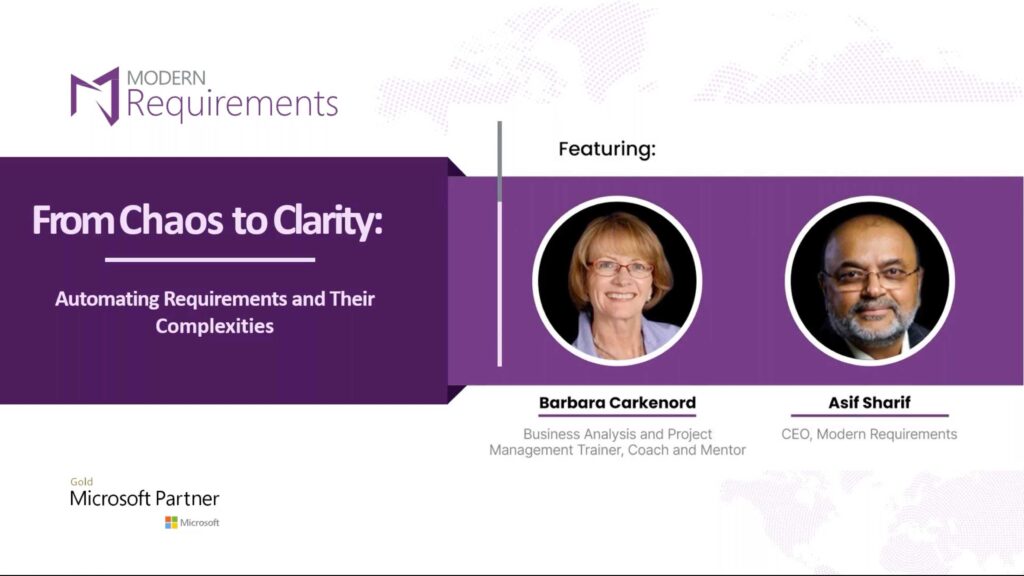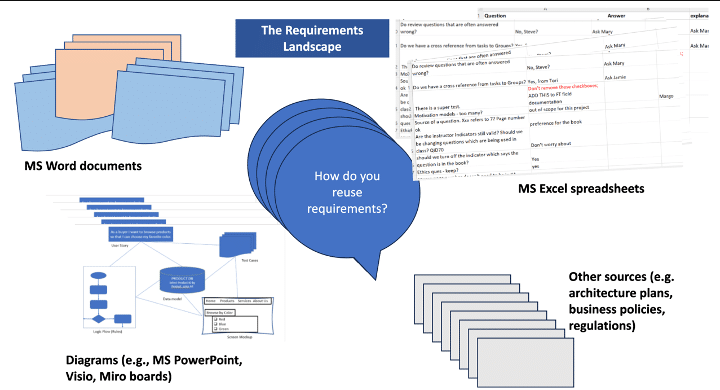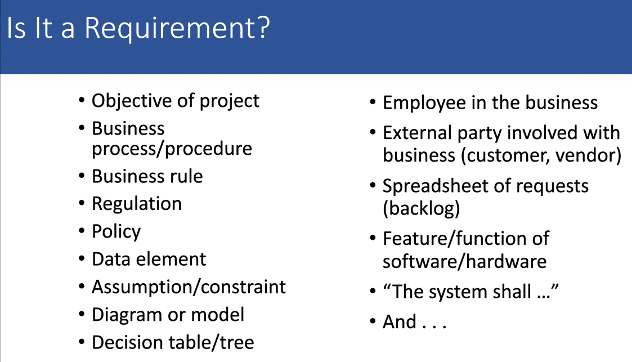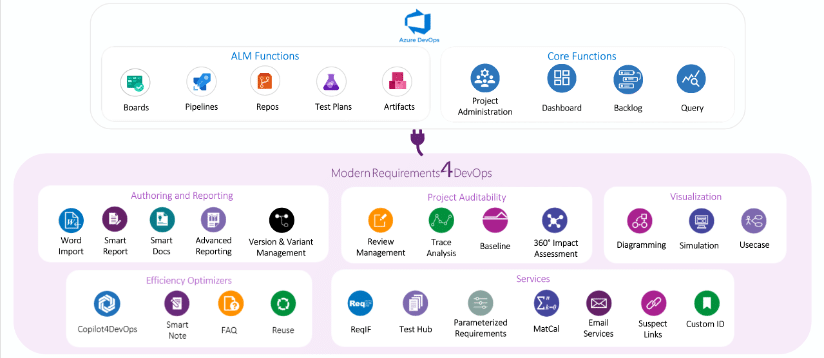
Webinar Recap - From Chaos to Clarity: Automating Requirements and Their Complexities
- Arunabh Satpathy
- October 31, 2023
- 4 minutes
Requirements management is an essential part of successful project completion. Unfortunately, requirements themselves can be very complex. Unfortunately, the requirements themselves are very complex. Keeping this in mind, Modern Requirements held a webinar with Business Analysis and Project Management Coach Barbara Carkenord exploring how requirements management tools bring clarity to chaos.
Carkenord explored the difficulties of managing complex requirements across different organizations using classification, documentation, and warehousing. Modern Requirements Chief Technologist and CEO, Asif Sharif and VP of Sales, Shihan Fernando introduced an award-winning requirements management tool and its features (including an AI assistant) as the solution to the chaos.
The session covered several topics:
- Requirements Management Tools: Exploring their vital role in business analysis and project development.
- Requirements Reuse: Saving time and boosting productivity through efficient requirement reuse strategies.
- Shared Repository Benefits: Embracing collaboration with a centralized platform for seamless requirement sharing.
- Traceability Assurance: Ensuring that critical solution aspects aren’t overlooked by mastering traceability.
Future of Requirements Management: Discovering best practices and emerging trends shaping the business analysis landscape, including AI requirements management tools.
Related Articles
1. How Requirements Management Tools Bring Clarity

Barbara Carkenord began by giving two definitions of requirements:
- A usable representation of a need. – BABOK Guide® Version 3.0, 2015.
- Condition or capability needed by a stakeholder to achieve an objective. – Institute of Electrical and Electronics Engineers
Despite the simplicity of the definition, Carkenord emphasized the complexity of requirements and how difficult they are to define and handle.
She also said their complexity in increased by how:
- Different requirements needed for different types of changes e.g. an automotive project needs diagramming for electrical components and written documentation for compliance issues
- Different stakeholders learn in different ways e.g. words vs images
- Different techniques result in different requirement formats e.g. use cases vs. Gherkins

To resolve the difficult task of requirements management, she made three recommendations:
- Classification
- Warehousing
- Requirements Management tools
2. Clarity with Modern Requirements
Shihan Fernando introduced the theme of the evening that “time is the ultimate currency.” He emphasized the need for requirements management teams to manage chaos and save time, including AI requirements tools. He introduced Modern Requirements4DevOps, an award-winning requirements management tool natively built into Microsoft Azure DevOps. He shared that Microsoft recently recognized Modern Requirements as an AI Transformation Partner at the Microsoft Inspire Conference 2023.
By “plugging” into Azure DevOps and providing many helpful tools, you can turn Azure DevOps into a single source of truth for all your teams.

Chief Technologist then Asif Sharif demonstrated how Azure DevOps becomes your system of record with Modern Requirements4DevOps features, including:
Smart Docs: It allows users to create living and structured MS Word-like documents with rich text editing within Azure DevOps. Sharif showed how you can create work items and reuse them by dragging and dropping them and compare two different versions of documents with redlines.
Diagrams: You can create diagrams and turn them or a part of a diagram into requirements within Azure DevOps. You can also generate use cases and test cases directly within Azure DevOps, simplifying your project management process.
Copilot4DevOps: A groundbreaking AI requirements management tool that can write, analyze, translate, elaborate, and summarize requirements based on raw requirements data. It can also convert work items into use cases, user stories, and Gherkins for maximum efficiency. The team also invited the attendees to access various Copilot4DevOps learning resources.
3. Microsoft and the Future of Requirements Management
The Q&A section explored webinar themes, including efficient risk analysis in MR, the role of user stories as placeholders, and the role of AI in requirements management. The webinar also showed how AI can make workers more productive and happier.
With businesses and professionals adopting Modern Requirements4DevOps and Copilot4DevOps, companies are sure to bring clarity to the chaos of requirements. Barbara Carkenord summarized the need for requirements management tools.
“There’s so much need for analysis work in the world,” she said. “Anything that helps us get rid of the grunt work is important to improve your productivity.”
Barbara Carkenord, Business Analysis and Project Management Trainer, Coach and Mentor

Barbara Carkenord, CBAP, IIBA-AAC, PMP, PMI-PBA, provides project management and business analysis consulting and training helping companies improve their delivery of business value. Barbara is passionate about enabling people and organizations to succeed through better communication, collaboration, and critical thinking. Barbara co-founded two successful business analysis training companies and worked in varied industries including manufacturing, financial services, hospitality, and software development. She has written books, articles, blogs, and training material aimed at helping professionals enhance their skills including Seven Steps to Mastering Business Analysis, first edition and RMC’s PMI-PBA Exam Prep book. Barbara helped define the business analysis profession, volunteering with IIBA® for 20 years. She helped to develop the worldwide standard for analysis, the BABOK® Guide and currently serves on IIBA’s Board.


